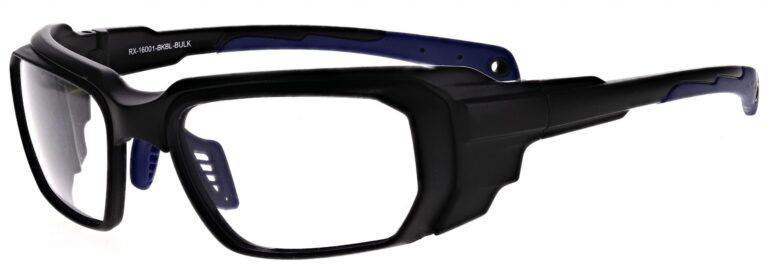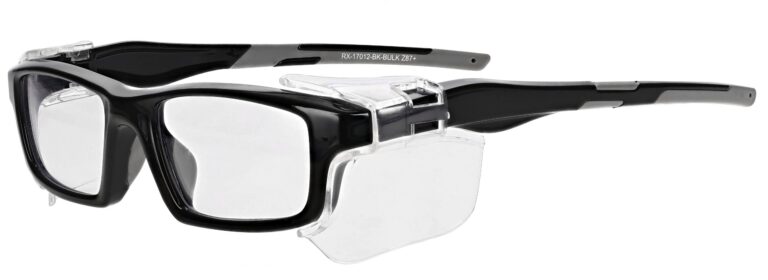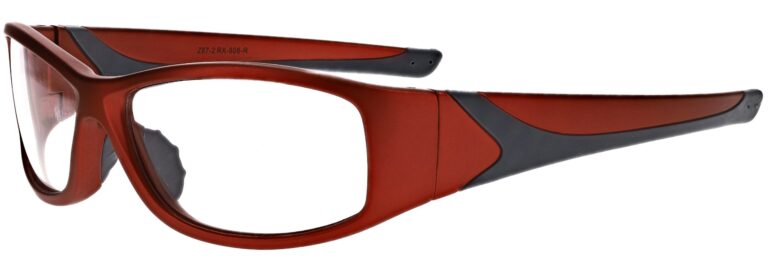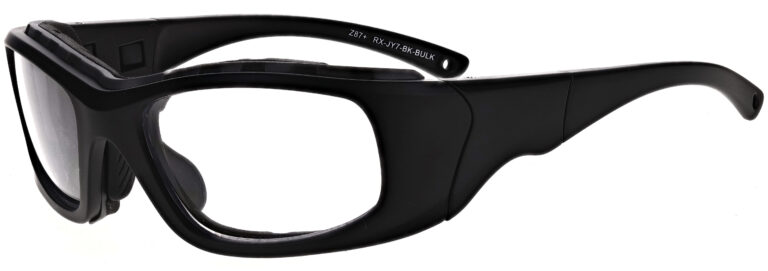





Millions of prescription glasses are sold every year in the United States. Whether you are searching for your first pair or your next pair, you are sure to find a pair that suits all of your needs. For example, at an online retailer like Rx-Safety, you can find everything from stylish, sophisticated prescription glasses to prescription glasses that are well-suited for difficult and challenging conditions.
When browsing our collection (or the collection of any other eyewear retailer), however, you may come across a question that may affect your working life. Specifically, you may be asking yourself whether prescription glasses can be counted as safety eyeglasses.
This is especially relevant if you are working at a job that requires you to wear safety glasses on the job. While your employer may give you safety glasses if you work in an environment with flying dust or debris, you may prefer a different pair of glasses. Along with this, you may want a pair of glasses that can satisfy your work requirements while also being stylish and functional when you are away from work.
Ultimately, we have designed this article to address some of the confusion about this question. With these facts at hand, you will be able to find the perfect pair of prescription eyeglasses that meet all of the safety requirements at your job. And spoiler alert: some types of prescription eyeglasses can count as safety eyeglasses.
To start, it is important to discuss some of the prime differences between prescription glasses and safety glasses. For the most part, prescription glasses are not the same as safety eyeglasses. This is for several reasons.
First, prescription glasses and safety glasses often aren’t made of the same material. Prescription glasses can be made of different plastic and metal materials (like Zyl and Monel). By contrast, safety glasses are made from more durable material because they are explicitly designed to offer additional eye protection.
The same is true of lenses. Lenses in prescription glasses are made from materials that help you see more clearly, but they aren’t as durable and protective as safety glass lenses. The most popular lens material for safety glasses, for instance, is polycarbonate. Polycarbonate lenses are lighter and more impact-resistant than the standard glass lens. As we will discuss below, the frame and lens materials in safety glasses are tested to ensure that they can withstand intense stress.
Along with the frame and lens materials, safety glasses tend to offer additional features that can help protect wearers. Looking in the Rx-Safety store, for instance, you can see that many pairs of safety glasses contain optional side shields. These side shields can help further protect wearers from flying dust and debris.
The bottom line? Safety glasses are designed for one role—safety. By contrast, prescription glasses exist to help you see better. Often, they are not as durable as safety glasses and can break when they are put under extreme pressure.
While many of these distinctions are clear, there are certain circumstances where prescription eyeglasses can count as safety eyeglasses. It all comes down to whether a pair of prescription glasses have been specifically designed to be safety glasses. Ultimately, safety eyewear must conform to a higher level of impact resistance than your standard pair of prescription glasses. The most recognized standards in eyewear arguably come from the American National Standards Institute (“ANSI”).
ANSI is a private, nonprofit organization overseeing the development of voluntary consensus standards for products and services in the United States. ANSI is so well-respected that even the Occupational Safety and Health Administration (“OSHA”), which governs workplace safety in the United States, looks to ANSI standards to determine whether certain eyewear properly protects workers while they are on the job.
Therefore, one of the best ways to determine whether prescription eyeglasses count as safety eyeglasses are whether they meet ANSI standards. There are many different ANSI standards in eyewear. You can find those standards here. Most often, however, you will see safety glasses meeting ANSI standards like Z87.
To meet any of these standards, the eyewear must pass several different types of tests. For instance, there is the “ball drop test” which involves a steel ball (weighing roughly 2.4 ounces) being dropped from a height of 50 inches. If the lens and frames remain intact, the eyewear passes that particular test. In the “high-velocity test,” a quarter-inch steel ball is shot at 20 different specified impact points on a particular pair of eyeglasses. This test is meant to simulate gravel or other small particles that may hit the eyewear when traveling at high speeds.
These are just a few examples. The bottom line, however, is that to meet ANSI standards, a pair of glasses must sufficiently protect the wearer from various types of impact and stress. Importantly, a pair of glasses does not need to be considered “safety glasses” in order to undergo ANSI testing. A pair of prescription eyeglasses can be deemed to be safety eyeglasses if it passes ANSI standards as described by OSHA.
Because of this, you may come across a situation where OSHA requires your employer to provide you with safety glasses while on the job. However, if your prescription glasses meet the relevant ANSI standard, you may be able to use those glasses in your work. To reiterate, there are several different ANSI standards, so you need to ensure that your glasses meet those standards.
If you already have a pair of prescription eyeglasses yet aren’t aware of whether they are ANSI approved, you can check on your glasses themselves. If they are ANSI approved, you should see a marking like “Z87” or “Z87+” on the frame and/or lenses. If you don’t see them, you may want to double-check with the original retailer. That said, the odds are good that your glasses may not be ANSI approved.
At Rx-Safety, we are proud to sell a wide range of prescription glasses that qualify as safety glasses. You can easily find some of these glasses by navigating to the top of this page, hovering over “safety glasses,” and selecting one of the “prescription” options.
As you can see, we offer stylish and functional prescription safety glasses from renowned brands like Wiley X. When you find a pair that you like, make sure to click on the particular pair of glasses that you are considering. Once you do so, you will be able to see which ANSI standards were met by this particular pair. With that knowledge in hand, you can purchase your prescription safety glasses with greater confidence that you will be able to use them at work.
While not every pair of prescription glasses qualifies as safety glasses, those that do offer you the best of both worlds. Not only do they help you see well, but they provide you with added protection for your eyes. Whether you are at work or at play, a pair of prescription safety glasses can provide some peace of mind. They dramatically decrease the odds that your eyes suffer minor or significant damage throughout your day.
If you would like to learn more about prescription safety glasses, either check out our collection or contact us through the “contact” tab above.
Stay on top of the latest news about prescription safety glasses, eyewear, sunglasses, and all the trends in the industry.
DISCOVER NOWBe the first one to know about promotion, new products, and more.
Follow Us On Instagram @rx_safety

